Matthew Murrie's Blog, page 3
January 20, 2023
Curiosity Is Based Thinking
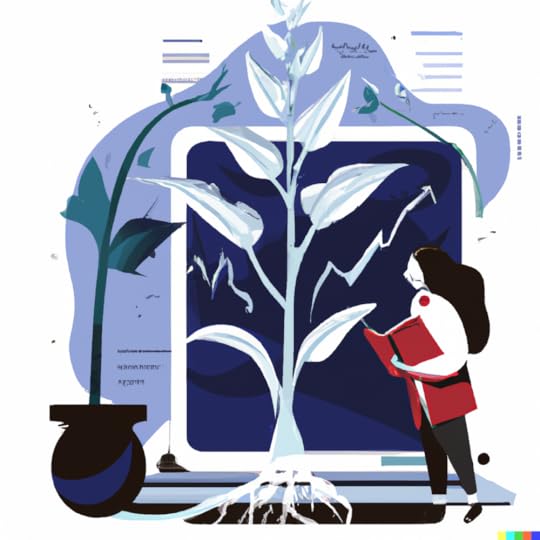
Curiosity is a fundamental human trait that has driven scientific discovery, technological advancements, and personal growth for centuries. But what if this innate drive to explore and understand the world around us is more than just a casual interest?
What if curiosity is the foundation of how we think and learn?
Recent research in neuroscience and psychology has begun to shed light on the connection between curiosity and learning. Studies have shown that ,when people are curious, their brains are more active and engaged, leading to better memory retention and problem-solving abilities. Additionally, ,a curious person tends to be more open-minded and willing to consider multiple perspectives, which is essential for critical thinking.
This idea that curiosity is the basis of thinking has important implications for education since traditional teaching methods often focus on providing students with information and expecting rote memorization.
But what if instead, we focused on fostering curiosity and encouraging students to ask questions and explore their own interests?
In the classroom, Curiosity-Based Thinking is a powerful tool for educators, allowing them to create engaging and effective lessons on any subject that motivate students to explore, question, think critically, and develop personal momentum.
A Curiosity-Based Thinking approach to education prioritizes student-led learning and inquiry. Rather than simply providing information, teachers act as facilitators, guiding students as they investigate and make connections. This approach would allow students to take ownership of their learning, leading to a deeper understanding of the subject matter and increased motivation to learn.
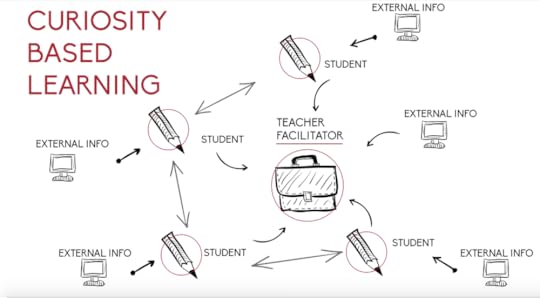
And with the ,emergence of AI tools like ,ChatGPT for education, now is the perfect time for all teachers to transform into facilitators connecting students' curiosities to robust learning opportunities.
Curiosity-Based Thinking in learning also promotes critical thinking and problem-solving skills. By encouraging students to question and explore, they would be forced to evaluate evidence and consider multiple perspectives, leading to a more well-rounded understanding of the world.
Curiosity-Based Thinking is rooted in the idea that students should be active participants in their own learning. Rather than simply receiving information from a teacher, students are encouraged to ask questions, make connections, and explore their own interests. This approach allows students to take ownership of their learning and develop a deep understanding of the subject matter.
One of the key benefits of taking a Curiosity-Based Thinking approach to learning is how it promotes critical thinking skills. When students are encouraged to ask questions and explore new ideas, they are forced to think critically about the information they are receiving.
This also puts learners into experiences where they must evaluate the evidence and consider different perspectives, which helps them develop the ability to make informed decisions and solve problems.
Another benefit of a Curiosity-Based Thinking approach to learning is how it increases student engagement. When students are allowed to explore their own interests and passions, they are more invested in the learning process. This then leads to increased motivation and a greater willingness to participate in class discussions and activities.
Incorporating Curiosity-Based Thinking into the classroom also helps create a more inclusive learning environment. By allowing students to explore their own interests and perspectives, educators can create a space where all students feel valued and respected. This can lead to greater social and emotional well-being among students, which is essential for academic success.
But it's not just in the classroom where the benefits of a Curiosity-Based Thinking approach to learning would be seen. In a world where technological advancements are happening rapidly, having curious individuals that can question, explore and think critically is crucial for society's progress.
The future of innovation, communication, and a better future all rest in our ability to activate our curiosity.
Curiosity-Based Thinking is a powerful approach to education that can help educators create engaging and effective lessons. By promoting critical thinking skills, increasing student engagement, and fostering a more inclusive learning environment, educators can help their students become lifelong learners who are equipped with the skills and knowledge they need to succeed in today's rapidly changing world.
Want to learn more about how you can incorporate curiosity-based thinking into your teaching and learning? Contact ,What If Curiosity today and see how we can help you create an engaging and effective learning environment for your students.
January 19, 2023
How to Learn Anything from a Chair
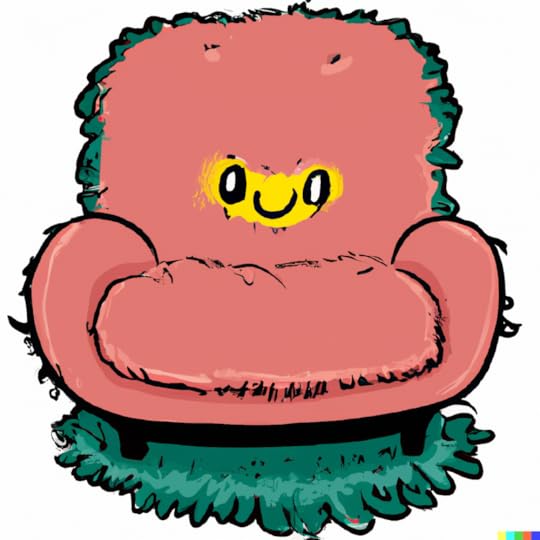
A while back, I wrote about the fun of combining the ,Random Curiosity Generator with DALL-E to create first an image, then a product... then a store around the ,Fluffy Smiling Living Room Chair.
Before long, the educator in me started asking more "what ifs...?" on how we might take a Curiosity-Based Thinking approach to integrate AI technology like ,OpenAI's ChatGPT into our current learning environments:
What if Fluffy Smiling Living Room Chair could teach history?
What if the Fluffy Smiling Living Room Chair could teach science?
What if the Fluffy Smiling Living Room Chair couldn't just teach science, but something as specific as the structure of a cell?
What if the Fluffy Smiling Living Room Chair could teach Romeo and Juliet?
What if the Fluffy Smiling Living Room Chair could teach entrepreneurship?
What if these questions are just the start of what the Fluffy Smiling Living Room Chair--or any random curiosity a learner has--can teach?
Below is a Case Study for the Fluffy Smiling Living Room Chair and sample lessons and activities for middle school and high school classes all created taking a Curiosity-Based Thinking approach to ChatGPT to provide a glimpse into the future of learning and education.
* In addition to ChatGPT, these resources for ,ChatGPT Prompts and ,DALL-E Prompts were invaluable in creating these lessons., ,Contact me if you'd like me to guide you through these.
Case Study: The Fluffy Smiling Living Room Chair
Background:
The Fluffy Smiling Living Room Chair is a new product on the market that is designed to provide maximum comfort and relaxation for homeowners. The chair is made of high-quality materials such as foam for the cushions and wood for the frame. The chair also features a unique design with a smiling face on the backrest, which is meant to evoke a sense of warmth and friendliness.
Design and Materials:
The Fluffy Smiling Living Room Chair is designed with ergonomics in mind, ensuring that it provides the correct support for the back and legs. The cushions are made of high-density foam that conforms to the body's shape, providing optimal comfort. The frame is made of solid wood, which is both durable and sturdy. The chair also features a unique smiling face design on the backrest, which is made of a soft, durable fabric.
Manufacturing Process:
The Fluffy Smiling Living Room Chair is manufactured using state-of-the-art technology and equipment. The foam for the cushions is first cut to size and shape, then the frame is assembled and the cushions are attached. The smiling face design is then added to the backrest using a specialized printing process. The chair is then inspected for quality assurance before being packaged and shipped to retailers.
Marketing and Sales:
The Fluffy Smiling Living Room Chair is marketed as a comfortable and stylish addition to any living room. The chair is marketed through online and offline advertising, as well as through social media and influencer marketing. The chair is sold through major furniture retailers and online marketplaces.
Customer Feedback:
Customers have been highly satisfied with the Fluffy Smiling Living Room Chair, praising its comfort and unique design. Many customers have also commented on the chair's durability and sturdiness. Overall, the Fluffy Smiling Living Room Chair has received very positive feedback from customers.
The Fluffy Smiling Living Room Chair for History Class
Lesson Plan: The Evolution of Furniture Design: The Fluffy Smiling Living Room Chair
Objectives:
Understand the historical evolution of furniture design and how it reflects cultural and societal changes Analyze the design elements and principles used in the Fluffy Smiling Living Room Chair Understand the impact of technological advancements on furniture design and productionMaterials:
Images of historical furniture designs Case study information on the Fluffy Smiling Living Room Chair ,A d ,esign element and principle worksheetWarm-Up: (10 minutes)
Begin the class by displaying images of historical furniture designs, such as an Egyptian throne, a medieval chair, and a Victorian sofa, and ask students to observe and note the differences in design.Direct Instruction: (30 minutes)
Introduce the concept of furniture design and its evolution throughout history. Discuss how furniture design reflects cultural and societal changes such as technological advancements and economic and social status. Provide an overview of the Fluffy Smiling Living Room Chair, its design, and how it fits in the current furniture design trend.Guided Practice: (30 minutes)
Divide students into small groups and assign each group a design element and principle worksheet. Have each group examine the Fluffy Smiling Living Room Chair and identify the design elements and principles used in its design. Have each group present their findings to the class.Independent Practice: (20 minutes)
Assign students to research and present a historical furniture piece and its design elements, and how it reflects the cultural and societal changes of its time.Closure: (10 minutes)
Review the key concepts covered in the lesson and ask students to share something they learned or found interesting. Remind students that furniture design is not only functional but also reflects the time and culture it was created in.Assessment:
Evaluate students' completion of the design elements and principles worksheet as well as their participation in group discussions and presentations. Use the independent research and presentation as a formative assessment of students' understanding of the key concepts covered in the lesson.The Fluffy Smiling Living Room Chair for Biology Class
Lesson Plan: The Anatomy of a Cell: The Fluffy Smiling Living Room Chair Case Study
Objectives:
Understand the basic structure and function of cell organelles Analyze the materials and components used in the Fluffy Smiling Living Room Chair in relation to the organelles of a cell Understand the importance of considering the structure and function of cells in the design and production of everyday objectsMaterials:
Diagrams of the cell organelles and their functions Case study information on the Fluffy Smiling Living Room Chair Cell organelle worksheetWarm-Up: (10 minutes)
Begin the class by asking students to brainstorm a list of the different parts of a cell, and write the list on the board.Direct Instruction: (30 minutes)
Introduce the concept of cell organelles and their structure and functions. Provide an overview of the main cell organelles and their functions, using diagrams to help students visualize. Provide an overview of the Fluffy Smiling Living Room Chair, its materials, and components and how they relate to the organelles of a cell.Guided Practice: (30 minutes)
Divide students into small groups and assign each group a cell organelle worksheet. Have each group examine the Fluffy Smiling Living Room Chair and identify the materials and components used and how they relate to the cell organelles. Have each group present their findings to the class.Independent Practice: (20 minutes)
Assign students to research and present an everyday object and how it relates to the structure and function of cells.Closure: (10 minutes)
Review the key concepts covered in the lesson and ask students to share something they learned or found interesting. Remind students that the structure and function of cells is important in the design and production of everyday objects, not only to provide comfort but also to improve our overall well-being.Assessment:
Evaluate students' completion of the cell organelle worksheet as well as their participation in group discussions and presentations. Use the independent research and presentation as a formative assessment of students' understanding of the key concepts covered in the lesson.More Material
Providing an overview of the main cell organelles and their functions using diagrams:
- Begin by displaying a diagram of a plant or animal cell on the board.
- Label the main organelles, such as the nucleus, mitochondria, endoplasmic reticulum, and others.
- Provide a brief description of the function of each organelle, and ask students to take notes.
- Use examples to help students understand the function of each organelle, such as "The mitochondria are like the power plants of the cell, producing energy for the cell to use."
- Allow students to ask questions and clarify any concepts they may be unsure of.
- Use a worksheet or interactive activity to assess students' understanding of the organelles and their functions.
Providing an overview of the Fluffy Smiling Living Room Chair, its materials, and components and how they relate to the organelles of a cell:
- Begin by displaying images of the Fluffy Smiling Living Room Chair and its components, such as the cushions, frame, and legs.
- Discuss the materials used in the chair's construction, such as foam for the cushions and wood for the frame.
- Relate the materials and components of the chair to the organelles of a cell. For example, the cushions can be related to the cell membrane, which surrounds and protect the cell. The frame can be related to the cytoskeleton, which gives the cell shape and support.
- Allow students to ask questions and clarify any concepts they may be unsure of.
- Use a worksheet or interactive activity to assess students' understanding of how the Fluffy Smiling Living Room Chair relates to the organelles of a cell.
The Fluffy Smiling Living Roo Chair for Learning Romeo and Juliet
Lesson Plan: The Symbolism of the Fluffy Smiling Living Room Chair in Romeo and Juliet
Objectives:
Understand the symbolism of the Fluffy Smiling Living Room Chair in the play Romeo and Juliet Analyze how the Fluffy Smiling Living Room Chair relates to themes and motifs in the play Understand the importance of considering symbolism in literary analysisMaterials:
Copies of the play Romeo and Juliet Case study information on the Fluffy Smiling Living Room Chair Symbolism worksheetWarm-Up: (10 minutes)
Begin the class by asking students to brainstorm a list of symbols in the play Romeo and Juliet, and write the list on the board.Direct Instruction: (30 minutes)
Introduce the concept of symbolism in literature and its importance in literary analysis. Provide an overview of the Fluffy Smiling Living Room Chair and its potential symbolism in the play Romeo and Juliet. For example, the chair could symbolize comfort, security, and a sense of home. Ask students to consider how the Fluffy Smiling Living Room Chair relates to themes and motifs in the play such as love, family, and conflict.Guided Practice: (30 minutes)
Divide students into small groups and assign each group a symbolism worksheet. Have each group examine the Fluffy Smiling Living Room Chair and its potential symbolism in the play Romeo and Juliet. Have each group present their findings to the class.Independent Practice: (20 minutes)
Assign students to select a different symbol from the play Romeo and Juliet and analyze its significance and how it relates to themes and motifs in the play.Closure: (10 minutes)
Review the key concepts covered in the lesson and ask students to share something they learned or found interesting. Remind students that symbolism is an important aspect of literary analysis, as it helps to uncover deeper meanings and themes in a work of literature.Assessment:
Evaluate students' completion of the symbolism worksheet as well as their participation in group discussions and presentations. Use the independent analysis as a formative assessment of students' understanding of the key concepts covered in the lesson.The Fluffy Smiling Living Room Chair for Business Class
Lesson Plan: Introduction to Entrepreneurship: The Fluffy Smiling Living Room Chair
Objectives:
Understand the basic principles of entrepreneurship and how they apply to the development and launch of a new product Analyze the key components of a business model and how they relate to the Fluffy Smiling Living Room Chair Understand the importance of market research and customer segmentation in the product development processMaterials:
Business Model Canvas worksheet Case study information on the Fluffy Smiling Living Room ChairWarm-Up: (10 minutes)
Begin the class by asking students what they know about entrepreneurship. Write their responses on the board. Ask students to brainstorm a list of products or services they use or know of and categorize them into needs and wants.Direct Instruction: (30 minutes)
Introduce the concept of entrepreneurship and the role it plays in creating new products and services. Provide an overview of the Fluffy Smiling Living Room Chair and its development process. Discuss the key components of a business model, using the Business Model Canvas as a guide. Highlight the importance of market research and customer segmentation in the product development process.Guided Practice: (30 minutes)
Divide students into small groups and assign each group a section of the Business Model Canvas worksheet. Have each group fill out their assigned section of the worksheet based on the case study information provided. Have each group present their findings to the class.Independent Practice: (20 minutes)
Assign each student a product or service they use or know of and have them complete a Business Model Canvas worksheet for it.Closure: (10 minutes)
Review the key concepts covered in the lesson and ask students to share something they learned or found interesting. Remind students that entrepreneurship is the process of creating something new and the ability to think creatively and adapt to change.Assessment:
Evaluate students' completion of the Business Model Canvas worksheet as well as their participation in group discussions and presentations. Use the completed Business Model Canvas worksheets for independent practice as a formative assessment of students' understanding of the key concepts covered in the lesson.If you're interested in learning more about how to bring a curiosity-based thinking approach to learning to your school or organization, please contact ,What If Curiosity to learn more about our services.
January 18, 2023
Learning Entrepreneurship the Fun Way: A Curiosity-Based Approach with ChatGPT

Entrepreneurship education can be dry, boring, and paint-by-the-numbers, but it doesn't have to be. Taking a Curiosity-Based Thinking approach to learning entrepreneurship using ChatGPT makes the learning experience more engaging and productive.
Combing Curioisty-Based Thinking with ChatGPT helps learners explore entrepreneurial ideas in a fun and interactive way. In this blog post, I'll show you some simple ways to use ChatGPT to learn entrepreneurship that is effective, enjoyable, and based in human curiosity.
Here are some examples of how Curiosity-Based Thinking can be combined with ChatGPT to create lessons and activities around the entrepreneurial topics of business idea generation, market research, and entrepreneurial case study:
Business Idea Generation:Teachers can use ChatGPT to help students generate new business ideas by asking it open-ended questions such as "What are some unique business ideas for a small town?" or "What are some untapped market opportunities in the technology industry?"
Sample Lesson:
- Students brainstorm a list of problems or needs in their community.
- Students use ChatGPT to ask open-ended questions such as "What are some unique business ideas to solve this problem?" or "What are some untapped market opportunities in this industry?".
- Students use the ideas generated by ChatGPT to create a business plan for a new venture.
Activity
- Students are then encouraged to ask follow-up questions to ChatGPT based on their own individual curiosity.
For example, if a student is interested in developing a business idea to solve a specific problem, they can ask ChatGPT questions such as "What are some examples of businesses that have successfully solved this problem in other communities?" or "What are the potential challenges of implementing this business idea?"
Market Research:Teachers can use ChatGPT to assist students in conducting market research by asking it questions about consumer demographics, market size, and competitors for a specific industry or product.
Sample Lesson:
- Students select a product or industry to research.
- Students use ChatGPT to conduct market research by asking it questions about consumer demographics, market size, and competitors for the product or industry.
- Students use the information gathered from ChatGPT to create a market analysis report.
- After conducting initial research, students are encouraged to ask follow-up questions to ChatGPT based on their own curiosity.
For example, if a student is interested in understanding the purchasing habits of a certain demographic, they can ask ChatGPT-specific questions about that demographic's buying patterns.
- Students can also ask ChatGPT about potential future developments in the industry or product they are researching.
Example Activity:
1. Students are assigned to research the market for a specific product, such as electric bicycles. Students can use ChatGPT to ask questions such as:
- "What is the size of the electric bicycle market in the US?"
- "What are the main consumer demographics for electric bicycles?"
- "What are the top competitors in the electric bicycle market and what are their market shares?"
- "What are the future predictions for the electric bicycle market?"
2. After conducting the research, the teacher leads a class discussion on the findings and encourages students to ask follow-up questions based on their own curiosity.
For example, "Why do you think the market for electric bicycles is growing so rapidly?" or "What do you think is the reason for the difference in market share between the top competitors?"
Entrepreneurial case study:Teachers can use ChatGPT to provide summaries of real-world entrepreneurial stories and help students learn from the successes and failures of successful entrepreneurs.
Sample Lesson:
- Students select an entrepreneur to research.
- Students use ChatGPT to provide summaries of the entrepreneur's story and ask questions such as "What were the key decisions that led to the success of this entrepreneur?" or "What were the major obstacles this entrepreneur faced and how did they overcome them?".
- Students use the information gathered from ChatGPT to create an entrepreneur case study report.
Example Activities
Students ask ChatGPT follow-up questions based on their own curiosity about the entrepreneur they are researching.
For example, if a student is interested in understanding the key decisions that led to the success of the entrepreneur, they can ask ChatGPT to provide more information about those decisions.
Students can also ask ChatGPT about the potential lessons that can be learned from the entrepreneur's story and how they can be applied to today's business world.
Students ask ChatGPT follow-up questions based on their own curiosity about the entrepreneur they are researching.
A teacher can assign students to research the story of a successful entrepreneur, such as Elon Musk. Students can use ChatGPT to ask questions such as:
"What were the key decisions that led to the success of Elon Musk?" "What were the major obstacles that Elon Musk faced and how did he overcome them?" "What are the leadership qualities of Elon Musk that contributed to his success?" "What can be learned from the story of Elon Musk that can be applied to today's business world?"After conducting the research, the teacher can lead a class discussion on the findings and encourage students to ask follow-up questions based on their own curiosity.
For example, "What do you think would have happened if Elon Musk didn't take the risk to start PayPal?" or "What are the lessons that can be learned from the way Elon Musk managed his companies?"
These activities are designed to encourage students to ask questions, explore and discover new information and ideas, and think critically about the information they are researching. This can help students to develop an inquisitive and curious mindset, which is an essential skill for entrepreneurs and business leaders.
ChatGPT can be a powerful tool for educators looking to bring real-world relevance to their entrepreneurship class. By using ChatGPT to conduct market research, generate business ideas, analyze industry trends, and study entrepreneurial case studies, educators can help students develop an inquisitive and curious mindset, which is an essential skill for entrepreneurs and business leaders.
If you're interested in learning more about how to bring a curiosity-based thinking approach to learning to your school or organization, please contact ,What If Curiosity to learn more about our services.
January 17, 2023
Curiosity-Based Thinking for Employee Engagement

Enjoy these simple ways employees can take a Curiosity-Based Thinking approach to enhance their engagement at work by finding greater job satisfaction, productivity, and success, all from using their curiosity.
Ask questions and seek new information about one's role and responsibilities:What if I asked my manager to explain the company's goals in relation to my role?
What if I sought out additional training or resources to improve my understanding of my job?
What if I asked a colleague in a similar role how they approach their work?
To-Do List :
- Schedule a meeting with your manager to discuss the company's goals and how your role aligns with them.
- Ask around and find additional training or resources relevant to your role.
- Reach out to a colleague in a similar role and ask if they would be willing to share their experiences and insights.
Being curious about and seeking to improve processes and procedures:What if I identified a specific process or procedure that could be improved and proposed a solution?
What if I sought feedback from colleagues on how a specific process or procedure could be improved?
What if I researched best practices in my industry and suggested implementing them in our company?
To-Do List :
- Identify a specific process or procedure that you think could be improved and propose a solution.
- Ask colleagues for feedback on improving a specific process or procedure.
- Dig into and discover best practices in your industry and suggest implementing them in your company.
Showing curiosity in and seeking to understand the company's mission and goals:What if I asked my manager to explain the company's mission and goals in more detail?
What if I looked into and learned more about the company's history and values?
What if I took acted upon my curiosity to better understand how my role aligns with the company's mission and goals?
To-Do List :
- Schedule a meeting with your manager to discuss the company's mission and goals in more detail.
- Research the company's history and values and be sure to include asking colleagues, community members, and customers in your research.
- Reflect on how your role aligns with the company's mission and goals.
Curious why more curiosity is excellent for whatever you are doing?Curiosity can be so many things, it is easy to get lost in its power and potential. To simplify things here's a quick list of just some of what we know curiosity can do. Enjoy and stay curious!
Curious people are ,less anxious Curious people are ,less timid Curious people are ,not as defensive during initial counters with strangers Curious people have ,less aggressive actions to perceived triggers Curious people have ,improved conflict resolution skills Curious people have ,enhanced motivation to put themselves in another's shoes Curious people have ,less attachment to their own ideas Curious people have ,an increased interest in others' ideas Curious people are ,more likely to receive social support at work Curious people are ,more effective at building connections at work Curious people are ,more effective at building trust at work Curious people are ,more committed to their teams at work Curious people ,discover more innovative solutions that increase one's sense of meaningfulness at workBe sure to follow along with ,What If Curiosity as I will dive deeper with more specific examples and actions for how you can take a Curiosity-Based Thinking approach to learn, get, and enjoy more out of all you do.
Let's chat to maximize the power of your curiosity!
January 16, 2023
Hire Curious: Attracting Top Talent with Curiosity

Creating a culture of curiosity is ,essential for attracting and retaining top talent. But how do you build a culture that encourages curiosity and innovation?
The first step is to take a Curiosity-Based Thinking approach to the questions you ask during the interview process. By incorporating questions that assess a candidate's ability to think critically, ask questions, and approach problems creatively, you'll be better equipped to identify individuals who are naturally curious and will thrive in a culture that encourages learning and growth.
Take your interview questions from ,What? to Wow! with these Curiosity-Based Thinking questions to help you identify curious candidates and communicate your commitment to cultivating a culture of curiosity.
What is the biggest misconception about your field, and how do you address it?
Who do you think is the leader in your field, and why?
When was the last time you had to adapt to a new technology or tool?
Where do you see the biggest opportunities for growth in your field?
How do you handle uncertainty and ambiguity in your work?
Why do you think you can make a difference in this company?
Huh? Can you tell me more about a time when you faced a significant challenge or fear in your work, and how did you communicate it to your team or manager?
Wow! Can you tell me more about that unique solution you came up with for a problem the team was facing?
Curiosity-Based Thinking "What If...?" Questions Designed to Identify Curious CandidatesWhat if we were to encounter a major obstacle in our industry, how would you approach solving it?
What if we were to expand into a new market, how would you go about researching and understanding it?
What if you were tasked with leading a project outside of your comfort zone or area of expertise, how would you approach it?
What if a solution you proposed was met with pushback, how would you handle it?
What if a team member came to you with a new idea that seemed far-fetched, how would you respond?
What if you had to think about an existing problem in a completely different way, how would you go about it?
What if you had to work with a team member that you disagree with, how would you handle it?
What if we had limited resources to accomplish a task, how would you prioritize and make the most of what we have?
What if you had to take on a task that you've never done before, how would you prepare yourself to tackle it?
What if you were in a position where you had to make a decision that could significantly impact the company's future, how would you approach it?
What if we were to encounter a major obstacle such as a significant drop in sales, how would you approach solving it?
What if we were to expand into a new market, such as electric vehicles, how would you go about researching and understanding it?
What if you were tasked with leading a project outside of your comfort zone or area of expertise, such as developing a self-driving car, how would you approach it?
What if we were to encounter a major obstacle, such as a decrease in enrollment, how would you approach solving it?
What if we were to expand into a new market, such as education in the metaverse, how would you go about researching and understanding it?
What if you were tasked with leading a project outside of your comfort zone or area of expertise, such as developing a new STEM/STEAM curriculum, how would you approach it?
More Curiosity-Based Thinking Questions Designed to Identify Curious CandidatesWhat is a personal project or interest outside of your job responsibilities?
How do you stay current with developments and trends in your field?
Can you give an example of a problem or challenge you faced and how you approached it?
Can you tell me about a time when you received feedback and how you used it to improve yourself?
Can you tell me about a time when you had to adapt to a new technology or tool?
Can you give an example of a decision you made that required you to weigh multiple options and perspectives?
Can you tell me about a time when you had to explain a complex idea or concept to someone?
Can you tell me about a time when you had to work with a diverse group of people and how you navigated any differences?
Can you tell me about a time when you had to take a calculated risk?
Can you tell me about a time when you had to challenge the status quo or traditional way of doing things? Why did you do it and what was the outcome?
Curious why more curiosity is excellent for whatever you are doing? Curiosity can be so many things, it is easy to get lost in its power and potential. To simplify things here's a quick list of just some of what we know curiosity can do. Enjoy and stay curious! Curious people are ,less anxious Curious people are ,less timid Curious people are ,not as defensive during initial counters with strangers Curious people have ,less aggressive actions to perceived triggers Curious people have ,improved conflict resolution skills Curious people have ,enhanced motivation to put themselves in another's shoes Curious people have ,less attachment to their own ideas Curious people have ,an increased interest in others' ideas Curious people are ,more likely to receive social support at work Curious people are ,more effective at building connections at work Curious people are ,more effective at building trust at work Curious people are ,more committed to their teams at work Curious people ,discover more innovative solutions that increase one's sense of meaningfulness at workBe sure to follow along with ,What If Curiosity as I will dive deeper with more specific examples and actions for how you can take a Curiosity-Based Thinking approach to learn, get, and enjoy more out of all you do. ,Let's chat to maximize the power of your curiosity!
January 15, 2023
What to Wonder to Make Sunday Super!

Enjoy these Sunday"what ifs...?" to make your Sunday even more super than your ,Saturday !
Curious to make the most out of your Sundays? What if taking just a few minutes each day to wonder "what if...?" and feed your curiosity, you can contribute to cultivating a culture of curiosity within your organization and yourself?
These Curiosity-Based Thinking "what if...?" questions will help you generate new ideas, think critically, and inspire creativity in whatever you do. And the following Curiosity-Based Thinking activities will help you generate momentum to convert your curiosity into better learning and actions powered by curiosity.
You'll learn how to turn your Sundays into a day of wonder and growth using your curiosity. So, start asking "what if...?" to stoke your curiosity and make every Sunday super!
What if you could only eat food that was a specific color on Sundays?
What if you woke up tomorrow and could speak any language fluently?
What if you had a superpower, but could only use it one Sunday a year?
What if you were stuck in a cartoon world for a day?
What if Alice never went down the rabbit hole?
What if you could only eat one food for the rest of your life?
What if you could switch lives with anyone for a day?
What if you could only wear one outfit for the rest of your life?
What if Romeo and Juliet never met?
Now what?
How can you go from these "what if...?" questions and the curiosities they caused to something that contributes to cultivating a culture of curiosity within your organization and yourself?
If you are in a leadership position within an organization, you can use these questions as a prompt for brainstorming sessions, or as a way to encourage your team members to think more creatively.
Examples of Curiosity-Based Actions You Can Take
Activity 1: Hold a brainstorming session where the team members are divided into small groups and given one of the "what if...?" questions to discuss. Encourage them to think creatively and consider all possibilities. Once the time is up, each group presents its ideas to the larger group. Activity 2: Use one of the questions as a theme for a team-building event. Create different stations where team members have to work together to solve a challenge related to the question. For example, if the question is "What if you could only eat food that was a specific color on Sundays?", you could create a station where team members have to come up with a menu for a Sunday meal using only food that is the color blue. Activity 3: Use the question as a starting point for a company-wide competition. Encourage employees to submit ideas or projects that relate to the question. The winning idea can be implemented in the company or used as inspiration for future projects.You can also use these questions to inspire new projects or initiatives within your organization.
Examples of Curiosity-Based Actions You Can Take
Activity 1: Set aside time during team meetings for a "what if...?" question discussion. Encourage team members to share their thoughts and ideas on the question, and consider how it could impact the company or their work. Activity 2: Use the questions as a prompt for personal development plans. Encourage team members to consider how the question applies to their own work and personal goals, and what steps they can take to improve or grow. Activity 3: Incorporate the questions into the employee evaluation process. Ask team members to consider how the question applies to their work and how they have demonstrated creativity and curiosity in their role.You could also make it a weekly tradition to come up with a new curiosity-based thinking question and encourage people to think about it during their free time.
Examples of Curiosity-Based Actions You Can Take
Activity 1: Use the questions as a starting point for a company-wide innovation challenge. Encourage employees to submit ideas or projects that relate to the question, and provide resources and support for the best ideas to be developed into projects or initiatives. Activity 2: Use the questions to identify areas of the business that could benefit from innovation or change. For example, if the question is "What if the opposite of our current belief is true?", use it as a prompt to reassess current business practices and consider alternative approaches. Activity 3: Incorporate the questions into the strategic planning process. Use them as a way to consider different scenarios and potential challenges, and develop strategies to address them.
Whether you are an educator, entrepreneur, or executive looking to cultivate a culture of curiosity within yourself or your organization, here are some ways to connect this Curiosity-Based Thinking activity directly to who you are and what you do.
Curiosity-Based Thinking Activities for Educators: Educators can use these "what if...?" questions as a way to encourage creative thinking and problem-solving in their students. For example, they could use a question like "What if we could only eat food that was a specific color on Sundays?" as a starting point for a science or math lesson on nutrition and food groups. Educators can also use these questions as a way to encourage critical thinking and analysis in their students. For example, they could use a question like "What if Romeo and Juliet never met?" as a starting point for a literature or history lesson on the impact of individual choices and actions. Educators could also use these questions as a way to inspire independent research projects and assignments, which would help students to develop research skills, creativity, and curiosity.Curiosity-Based Thinking Activities for Entrepreneurs: Entrepreneurs can use these "what if...?" questions as a way to generate new ideas for products or services. For example, a question like "What if the world was made of candy?" could inspire a new line of candy-based--or health-focused--products. They can also use these questions as a way to identify and solve problems within their business. For example, a question like "What if there were only odd numbers?" could be used as a prompt to think about how their business could operate in an unpredictable or uncertain environment. Entrepreneurs can also use these questions as a way to think about potential threats and opportunities in their industry, which would help them to be prepared for different scenarios.Curiosity-Based Thinking Activities for Executives: Executives can use these "what if...?" questions as a way to generate new ideas and strategies for their organization. For example, a question like "What if our current understanding of the world is fundamentally flawed?" could prompt them to rethink their organization's mission and values. They could also use these questions as a way to identify and address potential risks or challenges facing their organization. For example, a question like "What if the opposite of our current belief is true?" could prompt them to consider alternative scenarios and develop contingency plans. Executives can also use these questions as a way to encourage creativity and innovation within their organization, by encouraging employees to think about how the questions apply to their work and how they can improve or grow.Curiosity-Based Thinking Activities for Individuals: Individuals can use these "what if...?" questions as a way to encourage personal growth and development. For example, a question like "What if you could only eat one food for the rest of your life?" could prompt them to think about their dietary habits and make positive changes. They can also use these questions as a way to generate new ideas for personal projects or hobbies. For example, a question like "What if you could switch lives with anyone for a day?" could inspire a creative writing or art project. Individuals can also use these questions as a way to think more critically and creatively in their everyday life, by considering how the questions apply to the different scenarios they encounter and how they can approach them differently.Curious why more curiosity is excellent for whatever you are doing?Curiosity can be so many things, it is easy to get lost in its power and potential. To simplify things here's a quick list of just some of what we know curiosity can do. Enjoy and stay curious!
Curious people are ,less anxious Curious people are ,less timid Curious people are ,not as defensive during initial counters with strangers Curious people have ,less aggressive actions to perceived triggers Curious people have ,improved conflict resolution skills Curious people have ,enhanced motivation to put themselves in another's shoes Curious people have ,less attachment to their own ideas Curious people have ,an increased interest in others' ideas Curious people are ,more likely to receive social support at work Curious people are ,more effective at building connections at work Curious people are ,more effective at building trust at work Curious people are ,more committed to their teams at work Curious people ,discover more innovative solutions that increase one's sense of meaningfulness at workBe sure to follow along with ,What If Curiosity as I will dive deeper with more specific examples and actions for how you can take a Curiosity-Based Thinking approach to learn, get, and enjoy more out of all you do.
Let's chat to maximize the power of your curiosity!
January 14, 2023
Creativity and Innovation with Octopus-Inspired Thinking

Using a nature-inspired approach to innovation can be a highly effective way to think differently about problems and come up with novel solutions. One way to achieve this is by looking at the most innovative animals in nature, like the octopus.
What if, by considering the characteristics of an octopus, you can gain valuable insights and take innovative actions that can be applied to whatever you do?
By putting yourself in the mindset of an octopus and its characteristics, you can gain valuable insights that can be applied to your work.
How?
The following Curiosity-Based Thinking activity is an easy and effective way to spark innovation and creativity through ,biomimicry-inspired curiosity. It can be done individually or in a group setting, and it is s a low-risk, high-reward method of cultivating a culture of curiosity.
Imagine if you woke up one day as an octopus, how would that change the way you approach your work?
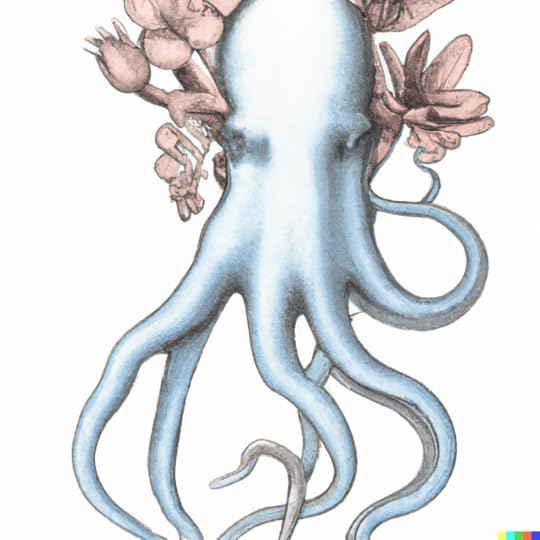
Innovating with the help of nature is a fantastic way to uncover valuable insights into your work.
Octopuses possess a wide range of fascinating characteristics that can provide valuable insights into our work and ways to approach problem-solving.
This process is designed to help you think about innovation by considering the characteristics of an octopus and how they can be applied to your own work.
This set of questions will take you through a process of Curiosity-Based Thinking to explore the world of octopus-inspired innovation in order to pique your curiosity, inspire innovative ideas, and motivate your next meaningful action.
What if you woke up one day and were an octopus?- What 8 things would you be excited about if you were an octopus?
- What 8 things would you be most concerned about?
- What if you had 8 arms instead of two? Describe how you would use each arm.
- What 8 ,characteristics of octopuses are you the most curious to learn more about?
- How would my new abilities change the way I solve problems?
- How would you overcome the underwater/out-of-water barrier between you and others?
- What if you could use your arms to communicate in a new way?
- What if, instead of becoming an octopus, you worked with an octopus?
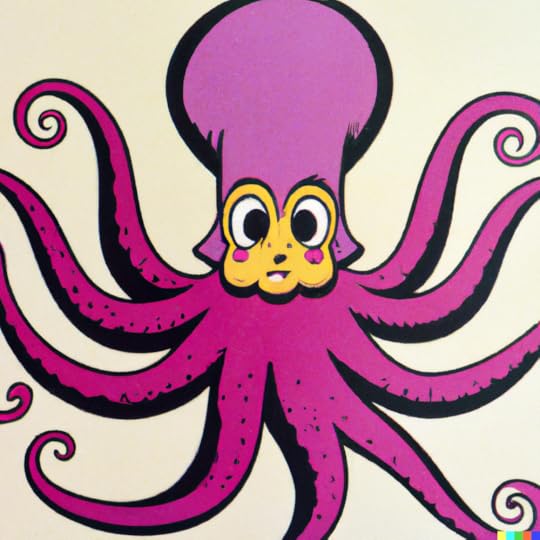
Whether you are an educator, entrepreneur, or executive looking to cultivate a culture of curiosity within yourself or your organization, here are some ways to connect this Curiosity-Based Thinking activity directly to who you are and what you do.
EducatorsEducators can use this activity to inspire curiosity in their students and help them think more creatively about the subjects they are learning. This could inspire students to think about the unique abilities of octopuses and how they could apply them to their own lives.
For example, educators can ask their students how they would learn differently as an octopus. They could also ask how specific classes like math, science, or gym would be different as an octopus.
Once students are stoked about octopuses, educators can extend the momentum by asking their students to think about what characteristics of octopuses they are most curious to learn more about and then continue the momentum by encouraging them to discover more and then share their learning.
Fostering curiosity and encouraging students to think more creatively isn't just good for student success, Curiosity-Based Thinking activities like this also assist educators in playing a more active role in their own job satisfaction and success.
EntrepreneursEntrepreneurs can use this activity to inspire creativity and innovation within their businesses.
For example, entrepreneurs could ask their team to think about what they would be excited about if they were octopuses--and which characteristics they'd be most excited to apply to their tasks in building the business.
Entrepreneurs could also modify this activity into a team-building, innovation workshop:
- Take an existing product or service and combine it with the characteristics of an octopus
- Give the product a name and
- Complete a ,Business Model Canvas for the new product
- Create an elevator pitch for the octopus-inspired product.
-Groups pitch their octo-products,
After everyone shares their "silly" new products, the entire team can mine through the pitches, insights, and ,Business Model Canvasses to cull insights to connect to your actual Business Model Canvas, products, services, and solutions.
ExecutivesExecutives can use this activity to inspire creativity and innovation within their organization.
For example, an executive could inspire team members to think about the unique abilities of octopuses and how they could apply them to their work by asking their team to think about what they would be most excited to do today if they were an octopus.
This Curiosity-Based Thinking activity would not only inspire team members to think about the unique abilities of octopuses and how they could apply them to their businesses, but also serve as an activity to cultivate a culture of curiosity and encourage out-of-the-box thinking and innovative ideas for problem-solving.
By encouraging wonder and curiosity among their team members, an executive can foster a culture of curiosity and innovation within their organization.
Individuals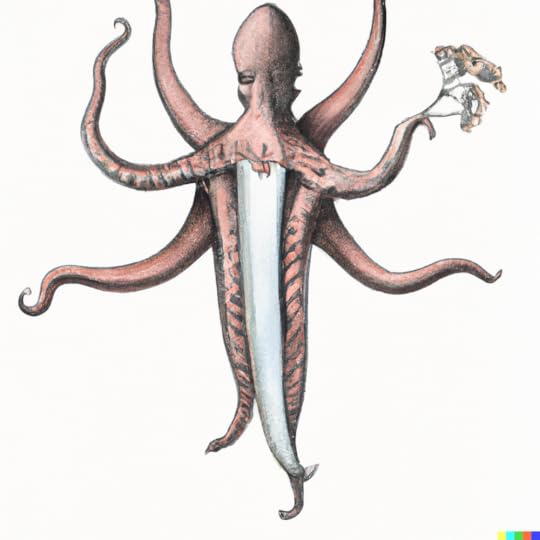
Any individual could use this activity to gain a new perspective and find inspiration for their personal life and goals.
By considering the characteristics of an octopus and putting themselves in its place, they can gain a fresh perspective on their own life and think more creatively about how they want to improve it.
For example, an individual could think about what they would be excited about if they were an octopus, and use that inspiration to set personal goals, such as developing a new skill, trying something new, or finding a new passion.
They can also think about what characteristics of octopuses they are most curious to learn more about and use that curiosity to explore new knowledge, personal growth, and self-awareness.
Individuals can also think about how they can use the octopus's ability to adapt and change to overcome challenges in their personal lives and find happiness and satisfaction.
By fostering curiosity and encouraging a growth mindset, an individual can find greater happiness and satisfaction in their personal life.

Want to keep your curiosity going and learn more about how to cultivate a culture of curiosity with Curiosity-Based Thinking?
Get a copy of the book, ,The Screaming Hairy Armadillo, and discover new and exciting ways to think differently and find success.
And visit ,What If Curiosity to learn how you or your organization can start cultivating a culture of curiosity with Curiosity-Based Thinking.
What to Wonder to Make Saturday Supreme

Enjoy these Saturday"what ifs...?" to make your Saturday even better than your ,Friday !
Cultivating a culture of curiosity takes time, effort, and a willingness to take risks, but by starting small and incorporating Curiosity-Based Thinking into your Saturdays, you can begin to see the benefits of thinking with a more curious mindset.
Simple Curiosity-Based Thinking activities like this ,"What to Wonder..." on a Saturday can also foster a more creative and innovative environment, where people are more willing to take risks, and be more open to new ideas and perspectives.
Taking a Curiosity-Based Thinking approach is a powerful tool for developing a culture of curiosity and for transforming one's perspective on anything from the days of the week to how to get things done.
What if...? SaturdayWhat if on Saturdays everyone on Earth had a third arm?
What if on Saturdays the sun was replaced by a giant disco ball?
What if Saturdays were made of ice cream?
What if every Saturday it snowed cotton candy?
What if you could turn into any animal on Saturdays?
What if all the trees turned into giant swings on Saturdays?
What if all the streets turned into water slides on Saturdays?
What if all the buildings turned into giant Lego sets on Saturdays?
How to use these Curiosity-Based Thinking questions to start cultivating a culture of curiosity within yourself and or your organization:* Take a few minutes each Saturday to explore these "what if...?" questions individually or as a team activity.
* Explore and learn as much as you can from these questions and the thoughts you have from them such as visiting a new place, trying a new hobby, or testing out an idea at work or on a project.
* Use the thoughts you have from hearing these questions as an opportunity to learn about new topics or skills, by reading, taking online courses, or attending workshops.
* Encourage others to join in and share their own "what if...?" questions and ideas.
*Reflect on what you've learned and experienced exploring these "what if...?" questions and share it with your team or colleagues.
By taking these simple steps, you can start to create a culture of curiosity within yourself and your organization. This can lead to greater engagement, job satisfaction, and ultimately to greater organizational success. For you, as an individual, developing a stronger culture of curiosity can lead to more opportunities for growth, learning, and self-discovery, leading to a more fulfilling and happier life.
Embracing a Curiosity-Based Thinking approach to develop a culture of curiosity can transform your perspective on any day to make it as exciting as a Saturday. Discover more about how this approach can help cultivate a culture of curiosity in your personal and professional life, by visiting ,What If Curiosity.
Curious why more curiosity is excellent for whatever you are doing?Curiosity can be so many things, it is easy to get lost in its power and potential. To simplify things here's a quick list of just some of what we know curiosity can do. Enjoy and stay curious!
Curious people are ,less anxious Curious people are ,less timid Curious people are ,not as defensive during initial counters with strangers Curious people have ,less aggressive actions to perceived triggers Curious people have ,improved conflict resolution skills Curious people have ,enhanced motivation to put themselves in another's shoes Curious people have ,less attachment to their own ideas Curious people have ,an increased interest in others' ideas Curious people are ,more likely to receive social support at work Curious people are ,more effective at building connections at work Curious people are ,more effective at building trust at work Curious people are ,more committed to their teams at work Curious people ,discover more innovative solutions that increase one's sense of meaningfulness at workBe sure to follow along with ,What If Curiosity as I will dive deeper with more specific examples and actions for how you can take a Curiosity-Based Thinking approach to learn, get, and enjoy more out of all you do.
Let's chat to maximize the power of your curiosity!
January 13, 2023
Curious Minds at Work
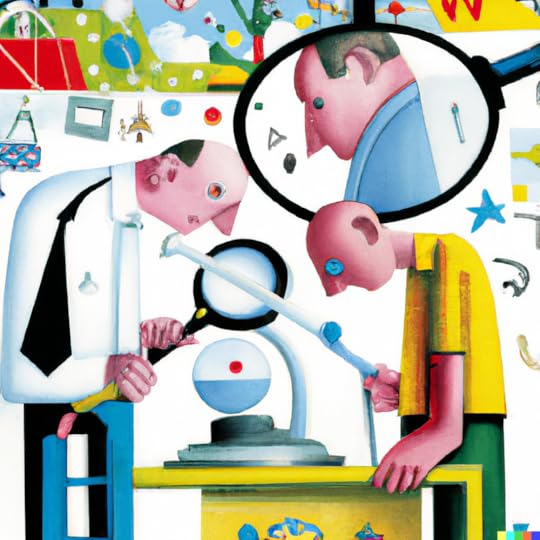
A culture of curiosity is your most powerful tool for ,improving job satisfaction and engagement among employees.
Curiosity can improve overall ,employee engagement, ,job satisfaction, and ,job performance. This ability to be curious can make employees feel more fulfilled in their roles and ,more motivated to contribute to the organization's success.
In fact, c ,urious employees are more likely to be engaged and satisfied with their jobs.
For instance, studies have found that ,employees who report high levels of curiosity are more engaged in their work and more satisfied with their jobs. They also tend to be more open to new ideas and more adaptable to change, which can be ,beneficial for organizations that operate in fast-paced, constantly evolving industries.
Additionally, ,when employees feel that their curiosity is being nurtured, they also report having, a better sense of motivation and purpose, which in turn improves their commitment to the organization and overall job satisfaction.
A culture that encourages curiosity also helps foster a more innovative, creative, and productive workforce.
It's worth noting that, it is not just the company but, ,individuals who are curious and continuously learning, that ,tend to have better work satisfaction. They are also, better equipped to handle changes and challenges.
Simple Examples to Start Cultivating a Culture of CuriosityEncouraging experimentation and exploration:By providing employees with the freedom to experiment and explore new ideas, they will naturally be exposed to new ways of thinking and problem-solving. This can lead to the development of new skills and the acquisition of knowledge that they can apply to their work.
For example, what if you spend a few minutes ,wondering about the days of the week to make them more wonderful with some Curiosity-Based Thinking "what ifs...?":
Providing opportunities for self-directed learning:A culture of curiosity can also involve providing employees with the resources and support they need to pursue their own learning and development goals. This could include offering access to online courses, mentorship programs, or workshops.
For example, what if you take ,a free course in Curiosity-Based Thinking?
Encouraging knowledge sharing:In a culture of curiosity, employees are encouraged to share what they know and learn from one another. This creates an environment where everyone can benefit from the collective knowledge of the organization, and employees have the opportunity to learn from the expertise of their colleagues.
For example, what if you and your colleagues create What If...? Power Sentences to communicate how you can combine your curiosity with your passion to accomplish any task?
Creating a culture of curiosity can be a powerful way to improve job satisfaction and engagement among employees. By fostering personal and professional growth, promoting innovation and creativity, improving communication and collaboration, enhancing problem-solving abilities, and increasing employee engagement, a culture of curiosity can help employees feel more motivated and engaged with their work.
If you're interested in using Curiosity-Based Thinking to develop a culture of curiosity in your organization, please don't hesitate to contact ,What If Curiosity to learn more. With the right guidance and support, you can build a culture of curiosity that will drive success and help your employees thrive.
Curious why more curiosity is great for whatever you are doing?Curiosity can be so many things, it is easy to get lost in its power and potential. To simplify things here's a quick list of just some of what we know curiosity can do. Enjoy and stay curious!
Curious people are ,less anxious Curious people are ,less timid Curious people are ,not as defensive during initial counters with strangers Curious people have ,less aggressive actions to perceived triggers Curious people have ,improved conflict resolution skills Curious people have ,enhanced motivation to put themselves in another's shoes Curious people have ,less attachment to their own ideas Curious people have ,an increased interest in others' ideas Curious people are ,more likely to receive social support at work Curious people are ,more effective at building connections at work Curious people are ,more effective at building trust at work Curious people are ,more committed to their teams at work Curious people ,discover more innovative solutions that increase one's sense of meaningfulness at workBe sure to follow along with ,What If Curiosity as I will dive deeper with more specific examples and actions for how you can take a Curiosity-Based Thinking approach to learn, get, and enjoy more out of all you do.
What to Wonder to Make Friday the 13th Freaky

Enjoy these "what ifs...?" and Thursday facts to make your Thursday even better than your ,Thursday !
What if on Friday the 13th, all the world's chickens suddenly grew to the size of elephants?
What if on Friday the 13th, all the world's elevators suddenly became haunted by ghosts?
What if on Friday the 13th, all the world's streetlights turned into a giant, dancing robots?
What if on Friday the 13th, time stood still and people were trapped in a never-ending loop of the day?
What if on Friday the 13th, all electronic devices malfunctioned and sent terrifying messages to their users?
What if on Friday the 13th, all the mirrors in the world showed a different reality?
What if on Friday the 13th, all the world's oceans suddenly disappeared, revealing ancient and terrifying creatures?
What if on Friday the 13th, the ground opened up and revealed a network of underground tunnels filled with clowns?
What if on Friday the 13th, all the world's cheese suddenly turned into a giant monster and started attacking cities?
What if on Friday the 13th, all the world's cats suddenly became giant, fire-breathing beasts?
Embracing a Curiosity-Based Thinking approach means approaching potentially intimidating experiences with an open mind and a desire to learn and understand more about them, rather than automatically reacting with fear or avoidance.
This approach can help individuals and organizations develop a culture of curiosity by encouraging them to question their assumptions and explore new ideas and perspectives.
By doing this, they can transform their perspectives on intimidating experiences like Friday the 13th and other potentially daunting experiences, and turn them into opportunities for growth, learning, and creating a culture of curiosity within individuals and organizations.
Simple Curiosity-Based Thinking activities like this can also foster a more creative and innovative environment, where people are more willing to take risks, and be more open to new ideas and perspectives. In this way, Embracing a Curiosity-Based Thinking approach can be a powerful tool for developing a culture of curiosity and for transforming one's perspective on intimidating experiences.
Embrace a Curiosity-Based Thinking approach to develop a culture of curiosity and transform your perspective on potentially intimidating experiences, like Friday the 13th. Discover more about how this approach can help you cultivate a culture of curiosity in your personal and professional life, by visiting ,What If Curiosity.
Curious why more curiosity is great for whatever you are doing?Curiosity can be so many things, it is easy to get lost in its power and potential. To simplify things here's a quick list of just some of what we know curiosity can do. Enjoy and stay curious!
Curious people are ,less anxious Curious people are ,less timid Curious people are ,not as defensive during initial counters with strangers Curious people have ,less aggressive actions to perceived triggers Curious people have ,improved conflict resolution skills Curious people have ,enhanced motivation to put themselves in another's shoes Curious people have ,less attachment to their own ideas Curious people have ,an increased interest in others' ideas Curious people are ,more likely to receive social support at work Curious people are ,more effective at building connections at work Curious people are ,more effective at building trust at work Curious people are ,more committed to their teams at work Curious people ,discover more innovative solutions that increase one's sense of meaningfulness at workBe sure to follow along with ,What If Curiosity as I will dive deeper with more specific examples and actions for how you can take a Curiosity-Based Thinking approach to learn, get, and enjoy more out of all you do.
Let's chat to maximize the power of your curiosity!



